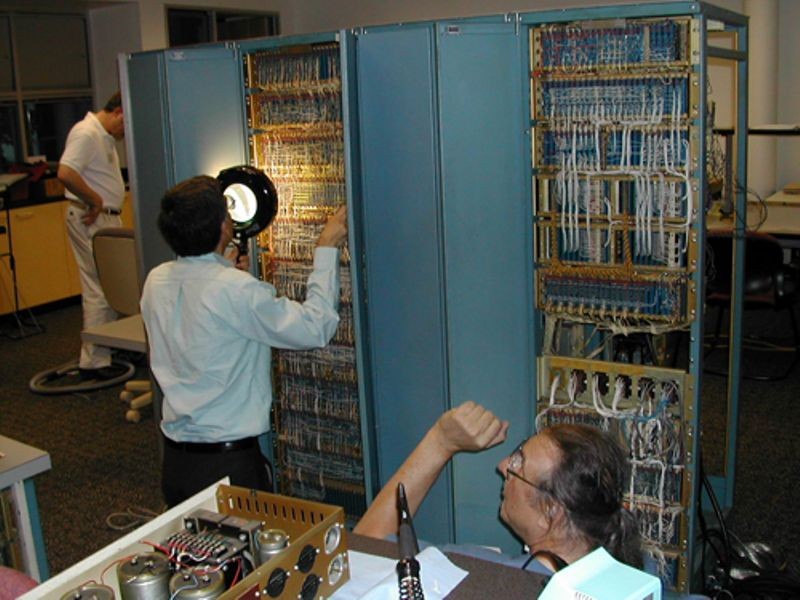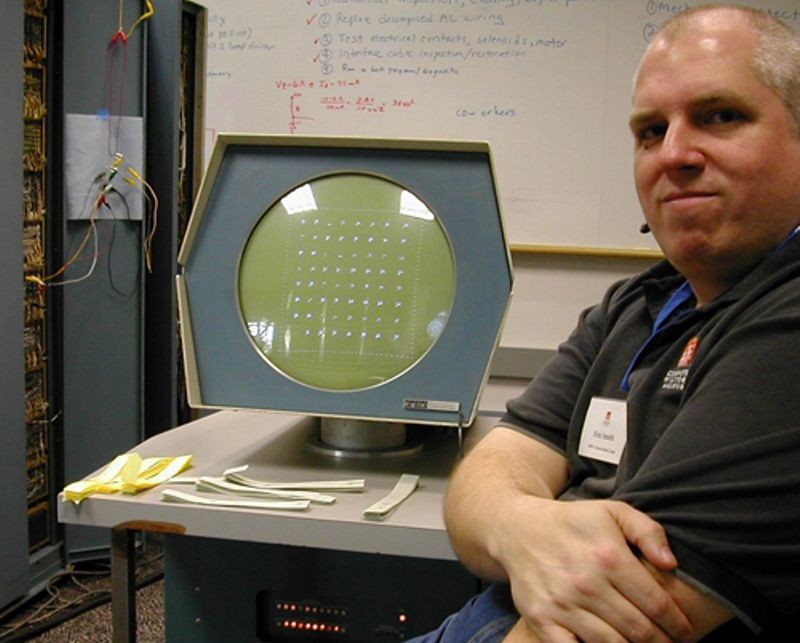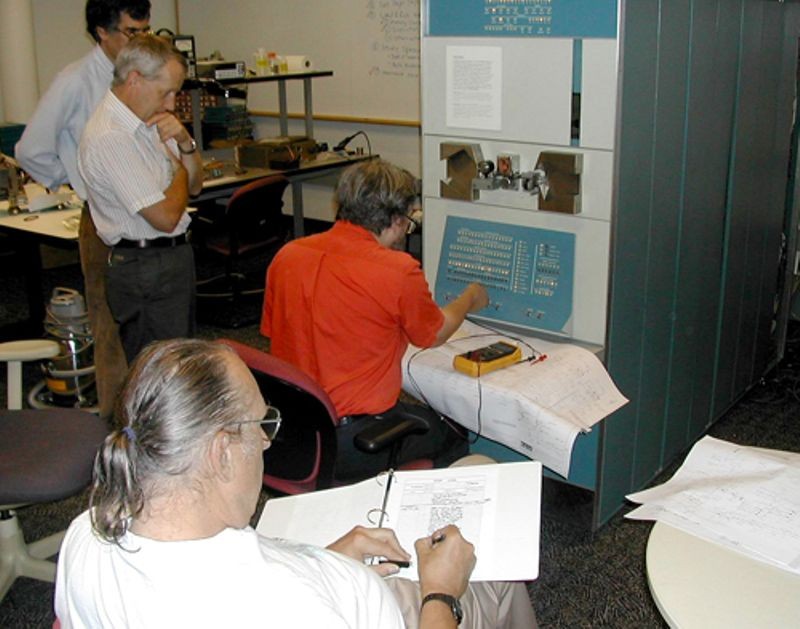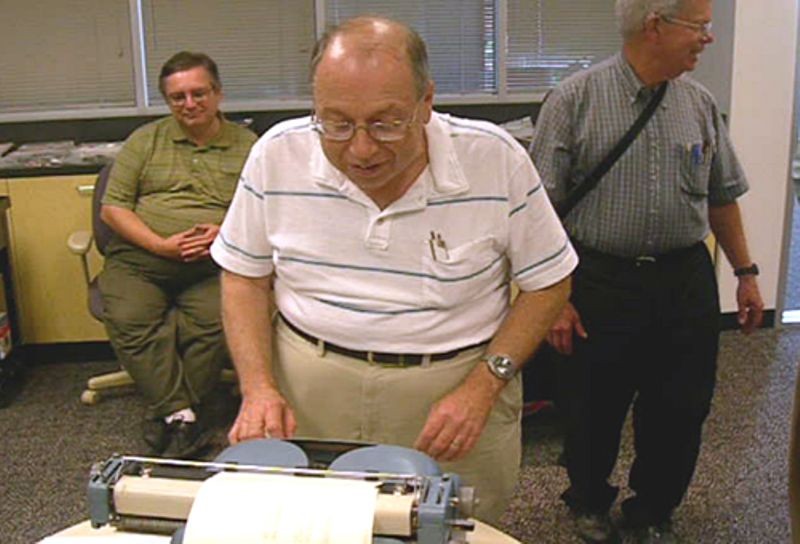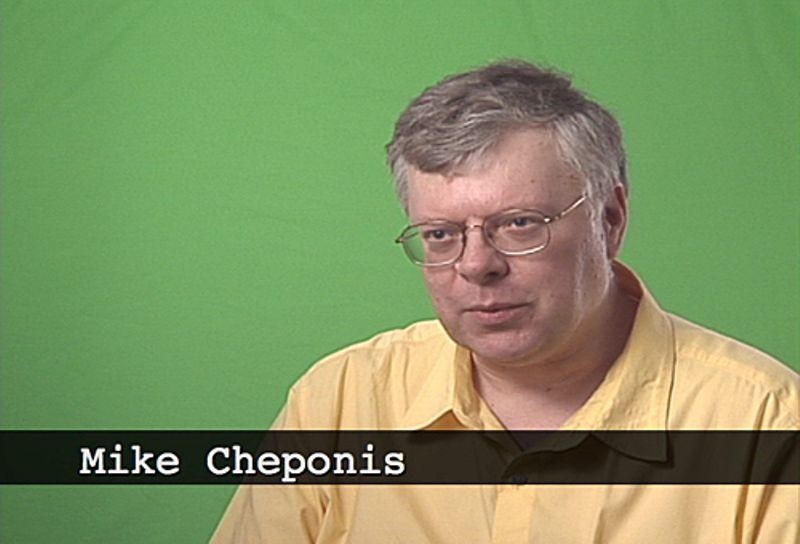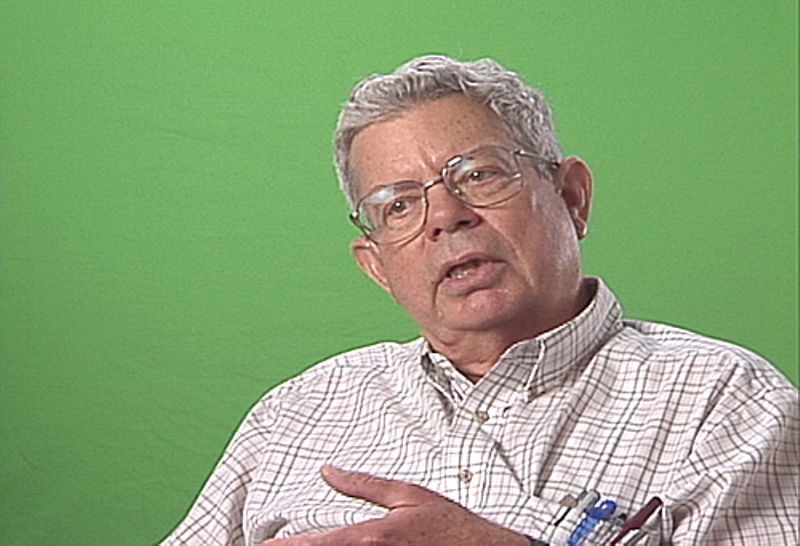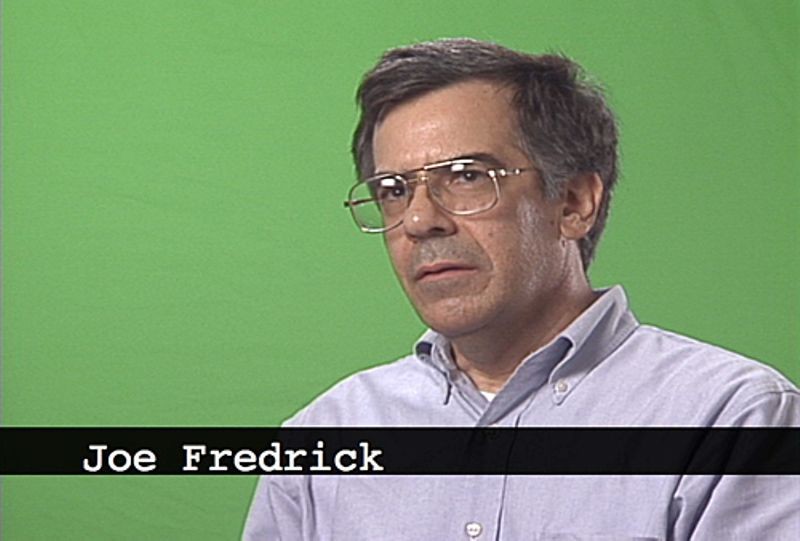Team
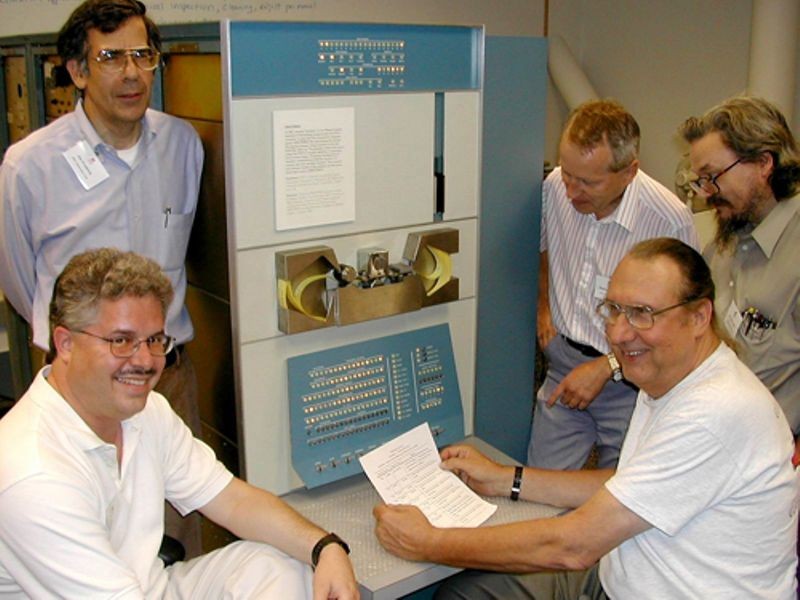
The restoration team was made up of members from the Museum's previous IBM 1620 Restoration Project (Fredrick, Coslet, Cheponis), people who had used a PDP-1 in the past, as well as other interested Museum volunteers. For two years, this spirited group met at least once a week for three hours.
The Roster:
Mike Cheponis
Mike was the project team leader and led the coordination of team members with the various hardware, software, and system milestones of the project. Mike also was responsible for documenting the restoration and for taking photos and movies of important events or restoration details. Mike is a creative problem-solver and at an important stage of the project brought the light pen to his dentist for x-ray-allowing the team to see what was inside its permanently-sealed enclosure.
Joe Fredrick
Joe was the hardware lead, a role that encompassed being responsible for coordinating the various team members skilled in this area with specific hardware milestones. He also worked on general debugging, repair of power supplies, the high-voltage circuitry in the Type 30 display, as well as restoring the core memory system.
Eric Smith
Eric was the project software lead. He wrote custom test programs to check the CPU, core memory, and control an automated power supply testing jig that greatly accelerated the early phase of the project.
Lyle Bickley
Lyle did hardware debugging and repair, and brought paper tape reader/punch and console operation expertise. Lyle was also very adept at locating spare parts for the machine when required.
R. Tim Coslet
Tim brought his superlative hardware debugging skills to the project, which included finding creative solutions to often obscure and complex technical issues—much to the delight and amazement of team members.
Peter Jennings
Peter undertook some hardware debugging and repair.
Al Kossow
Al, who is an expert in software preservation and access (and now CHM’s Robert N. Miner Software Curator), provided original software, documentation and paper tape reading of hundreds of historical PDP-1 programs from the Museum’s collection.
Bob Lash
Bob brought his analytical skills to repairing machine’s power supplies via capacitor reforming as well in hardware debugging of the light pen amplifier.
Steve Russell
Steve (“Slug”) was the original driving force behind the creation of Spacewar! – creating its first version while working at MIT. He often wrote code out of his apartment—the grandly named “Hingham Institute Study Group on Space Warfare.” Having Slug on the team was a key means of retrospectively-authenticating the accuracy of the restoration.
Peter Samson
A legendary programmer, Peter had worked on the star field portion of Spacewar! at MIT as well as several key early programs, like his Harmony Music Compiler. Peter’s phenomenal memory saved the day on several occasions and the lovely Bach arrangements you are likely to hear the PDP-1 play if you visit the machine is his work. Like Steve Russell (above), having Peter on the team was a key means of retrospectively-authenticating the accuracy of the restoration.
Rafael Skodlar
Rafael performed dozens of important hardware repairs and was a key contributor to repairs of various electromechanical devices such as fans, paper tape reader and punch, the CPU front panel and the Type 30 display.
Ken Sumrall
Ken performed hardware debugging and repair, including the light pen and Soroban console typewriter as well as building new heavy-duty Spacewar! control boxes.




